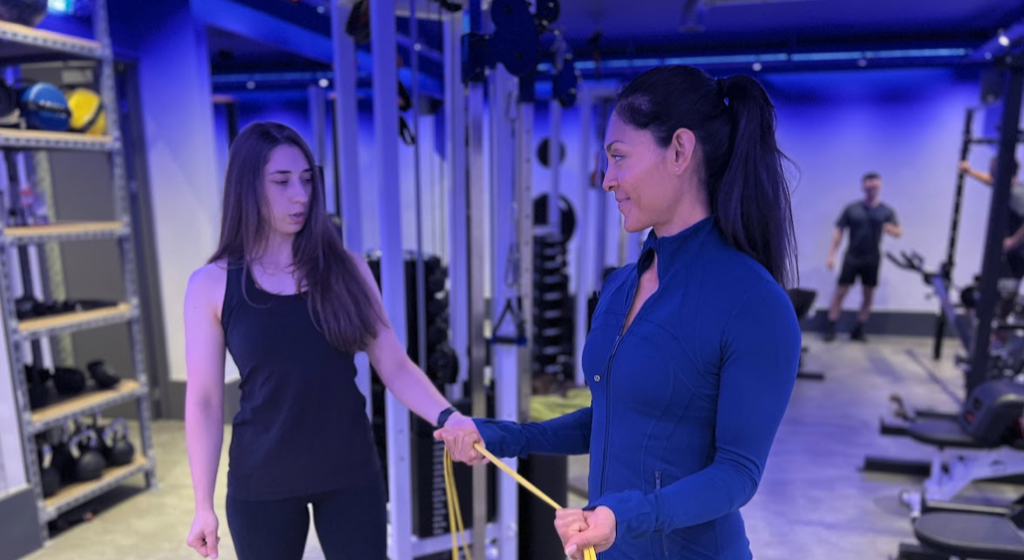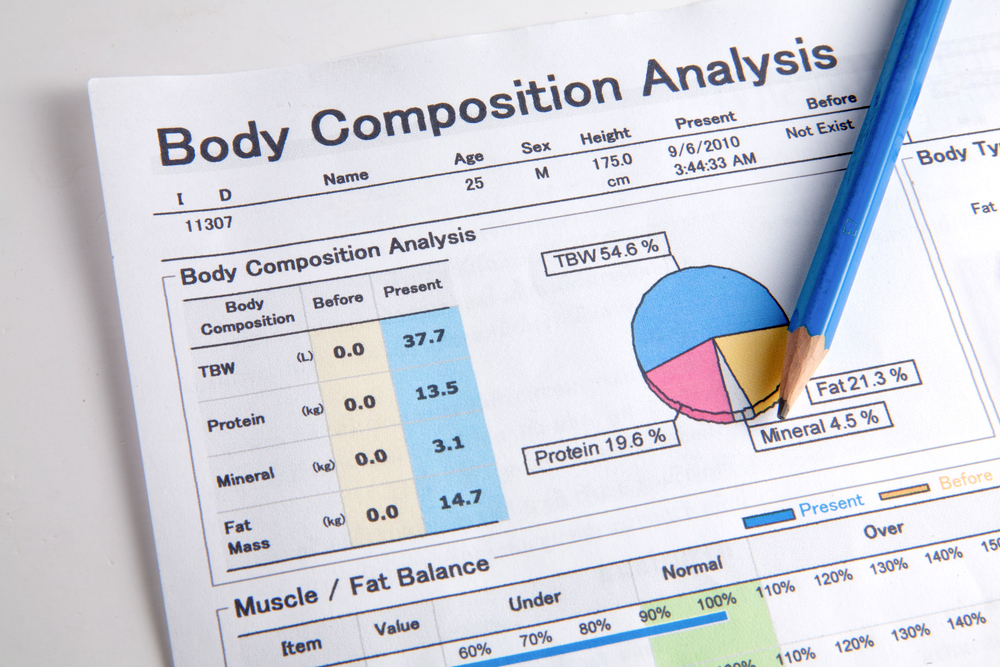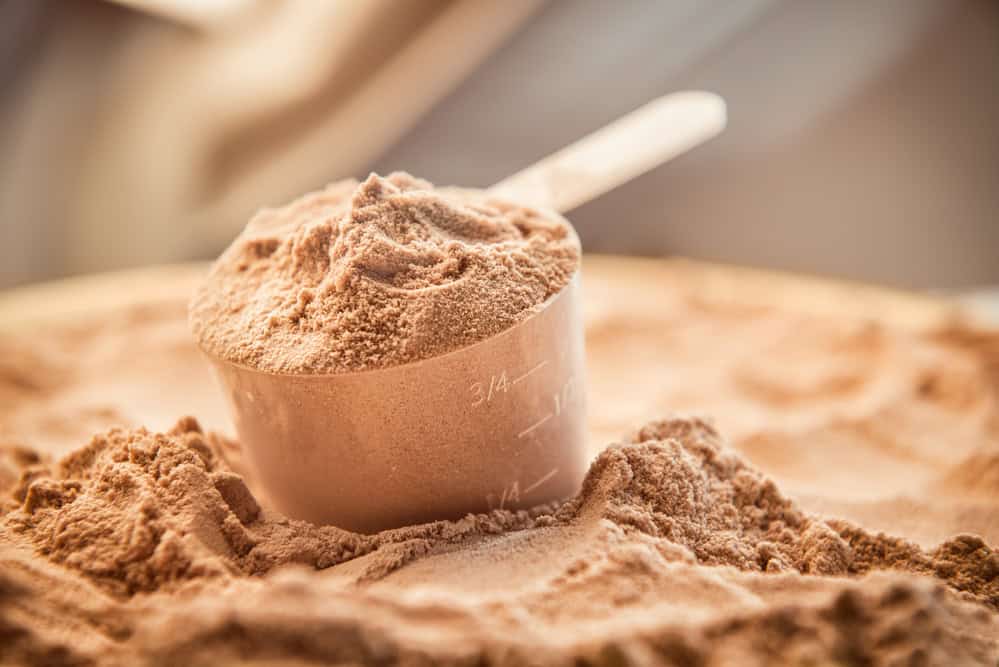This article will look into what weight loss training programmes look like. You will find out how they may vary from other programmes, and you will get a better idea of how you should structure a training programme for weight loss.
We will also answer some commonly asked questions, looking at the differences in cardio and strength training on weight loss as well as how your nutrition can help support your weight loss.
What’s your fitness background like?
When you go into the gym, you may see a range of different exercises being performed in a range of different ways. The number of repetitions and sets will also be very different. This will depend on people’s goals, knowledge, experience, time and training phase.
There is not a one size fits all training programme and the best programme for you may not be the best programme for someone else. A bit like if you went into an office, you wouldn’t expect an apprentice to be doing the same work as a senior manager.

Those with more gym experience are likely to be lifting heavier weights and maybe doing some more complex exercises you haven’t seen before as they look to find new ways to stimulate muscle growth or to achieve their individualised goals. You may also see more experienced lifters only doing a few reps. They can perform these movements safely as they have years of training and are used to heavy loads.
A good personal trainer will get a detailed understanding of your fitness background before creating a programme. This will mean the resulting workouts are perfectly tailored to you and your level of experience.
Fat loss vs weight loss
Weight loss and fat loss are terms often wrongly used interchangeably. Weight loss refers to reducing your mass on the scales. Fat loss refers more specifically to reducing the amount of fat mass on your body.
More often than not people are actually chasing fat loss rather than weight loss.

Your weight is made up of many things including your muscle mass, bone mass, organ mass, fluid levels and fat. Your standard scales will not tell you in this detail, it is therefore very hard to tell the reason you are losing/increasing weight. For example, you may be starting/increasing your weight training and find that your weight is actually going up. This could be due to your muscle mass increasing, even if your fat mass is decreasing.
There are some more sophisticated body composition scales which will give you a more in-depth analysis of what your weight is made up of, which will help give you a better idea of why your weight is actually changing, giving you more control over your body.
Some examples of body composition scales include Tanita, Whithings & RENPHO. These scales do come with a cost and aren’t readily available in all gyms but bear this in mind next time you step on the scales and your weight has changed.
Is there lots of cardio involved?
There is a common belief that the best way to lose fat is to do cardio workouts. Yes, cardio is effective in using up calories and helping you get into a calorie deficit – but is it the best way to burn fat?

Weight training can increase your basal metabolic rate (BMR) which is the amount of energy you burn at resting. Weight training helps increase your muscle mass and muscle burns more calories than other tissues at rest (Kraemer et al., 2002). This means that although cardio may burn more calories in a shorter period of time, the increase in muscle mass generated by weight training means it is more effective over a longer period of time at reducing body fat.
It would therefore be recommended a program consisting of weight training 2-3x a week alongside regular cardio is the best way to reduce fat mass when first starting out (Villareal et al., 2017; Yavari et al., 2012)
Including strength training in your workouts
As mentioned, strength training can help increase your BMR, burning more fat whilst you rest as well as burning calories whilst you exercise. Toning up is often a goal of many individuals.
So, what does toning up mean?
Toning up means having well-defined muscles which comes from a combination of muscle and low bodyfat.
So, whilst it is important to train and build muscle mass, by controlling the number of calories you are consuming you are restricting the amount of bodyfat you put on.

Often people are worried that weight training will increase their muscle mass by a lot and make them look bulky and muscular. It is important to bear in mind that differences in genetics affect the amount of muscle mass you can put on, for example women will generally find it harder to put on muscle mass than men due to their lower levels of testosterone. Similarly bulking, just like toning, isn’t purely down to your training but is also just as much down to your diet (Westerterp, 2019). If you are trying to put on muscle mass and become bulky you have to eat a considerable number of calories.
Supporting you with nutrition
Now, a big part of losing body fat is your nutrition.
Whilst training will help increase the number of calories and body fat burnt, if you are then eating more, or eating the wrong foods, your body fat isn’t going to decrease. If we are wanting to lose weight/fat, we need to ensure we are in a calorie deficit. This means we are consuming less calories than we are burning each day.
The good news is, our body requires approximately 2000kcal (women) and 2500kcal (men) just to function without any exercise. So, the more we exercise the more flexibility we have with our calories.

A good guide for a calorie deficit is around 500kcal a day. For example, if you are burning 2500kcal a day then you should aim to be consuming 2000kcal a day.
You might be wondering what on earth 2000kcal looks like and how much food that is.
All food packaging will inform you of the number of calories and breakdown of macronutrients within the product. There are plenty of paid and free apps out there which help you record and track the number of calories you are consuming, to help you gain more control over your diet.
Adding protein

You may be aware of the belief that when you begin weight training you should be consuming more protein.
Why is this?
This is due to the breakdown of muscle fibres caused by exercise and in particular weight training. These fibres then require protein to repair and grow back stronger.
The addition of more protein into the diet helps speed up this process allowing you to recover quicker, allowing a quicker turnaround between training sessions. It is important to be aware of the number of calories and the macronutrients you are consuming as this will play a big role in helping you achieve your goals.
Seeing results
The big question people always want to know the answer to, is how long will these results take?
This really depends. Some may start seeing differences within a couple of weeks whilst others may start seeing differences after a couple of months. This depends on how much fat you are looking to lose, how much training you are wanting to do, how many calories you are willing to cut and how strict you are willing to be.
Obviously, the more weight you are looking to lose and the less training you are wanting to do, the longer the results are going to take.

Similarly, if you find it hard to restrict your calories and like a binge day at weekends, results are going to take longer.
However, the thing to bear in mind is the changes you make should be sustainable. It is all well and good training 5x a week and being in a 750kcal deficit each day but if this isn’t sustainable as soon as you drop off you will put the body fat back on very quickly.
It is therefore vitally important we find small sustainable changes that we can stick to and build upon. Whether you initially begin by starting training twice a week, then after a few weeks you begin making small adjustments to the diet and so on and so forth. You need to find what changes are sustainable and work for you.
References
Kraemer, W. J., Ratamess, N. A., & French, D. N. (2002). Resistance training for health and performance. Current sports medicine reports, 1(3), 165-171.
Villareal, D. T., Aguirre, L., Gurney, A. B., Waters, D. L., Sinacore, D. R., Colombo, E., … & Qualls, C. (2017). Aerobic or resistance exercise, or both, in dieting obese older adults. New England Journal of Medicine, 376(20), 1943-1955.
Westerterp, K. R. (2019). Exercise for weight loss. The American journal of clinical nutrition, 110(3), 540-541.
Yavari, A., Najafipoor, F., Aliasgarzadeh, A., Niafar, M., & Mobasseri, M. (2012). Effect of aerobic exercise, resistance training or combined training on glycaemic control and cardio-vascular risk factors in patients with type 2 diabetes. Biology of Sport, 29(2), 135-143.

